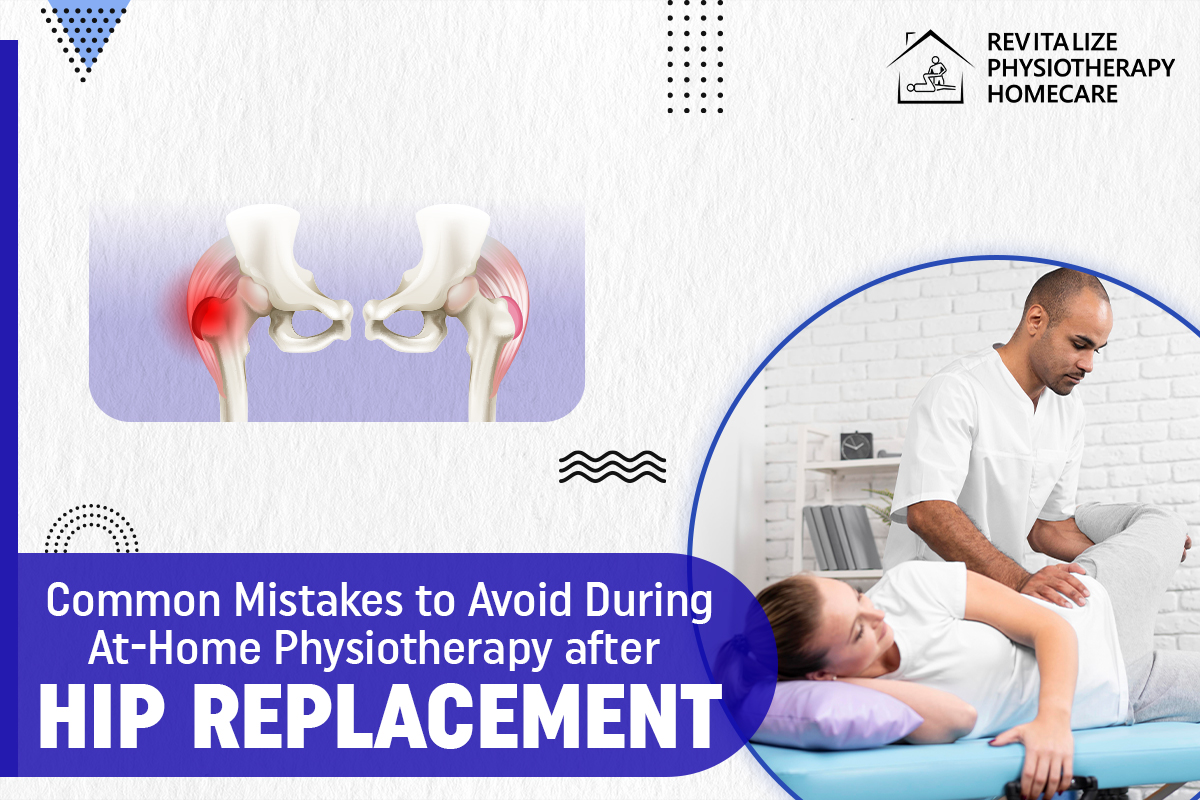Common Mistakes to Avoid During At-Home Physiotherapy After Hip Replacement
Hip replacement surgery is a life-changing procedure that brings relief from chronic pain and restores mobility. But the adventure doesn't stop at the operating table. Recovery is an ongoing process, and at-home physiotherapy plays a pivotal role in regaining strength and flexibility.
This blog will take you through the basics of hip replacement, the importance of physiotherapy, and the common mistakes to avoid during at-home physiotherapy after hip replacement.
What is Hip Replacement?
Hip replacement, also known as hip arthroplasty, is a surgical procedure that involves replacing a damaged or diseased hip joint with an artificial one. This surgery is commonly recommended for individuals suffering from severe arthritis, fractures, or chronic hip pain that limits mobility. The patient's quality of life will be improved, joint function will be improved, and pain will be relieved.
Now that we’ve covered what hip replacement is, let’s discuss why physiotherapy is critical in the recovery process.
Importance of Physiotherapy in Hip Replacement Recovery
A crucial component of the recuperation process following surgery is physical therapy. It helps:
- Restore Mobility: Exercises strengthen the muscles around the hip, enabling smoother movement.
- Reduce Pain: Targeted physiotherapy techniques can alleviate post-operative discomfort.
- Prevent Complications: Regular exercises improve blood circulation, reducing the risk of clots and stiffness.
- Regain Independence: Physiotherapy ensures that patients can return to daily activities confidently and safely.
With physiotherapy, recovery becomes a structured and safe process. However, to maximize its benefits, it’s crucial to avoid some common mistakes. Let’s dive into those now.
Common Mistakes to Avoid During At-Home Physiotherapy
1. Skipping Warm-Ups
One of the most overlooked aspects of physiotherapy is skipping warm-ups. Warm-ups prepare your body for exercise by increasing blood flow to the muscles and reducing stiffness. Jumping straight into exercises without warming up can lead to unnecessary strain or injury.
Let’s now discuss another common mistake—overdoing exercises.
2. Overdoing Exercises
While motivation is key to recovery, pushing yourself too hard can do more harm than good. Excessive exertion may result in edema, worsened pain, or possibly surgery site damage. Remember, recovery is a gradual process, and consistency matters more than intensity.
Next, let’s explore why improper posture can hinder your progress.
3. Maintaining Incorrect Posture
Posture is crucial during physiotherapy exercises. Performing movements incorrectly can strain other parts of the body and reduce the effectiveness of the exercise. Always ensure you follow the instructions provided by your physiotherapist and use mirrors or feedback to check your form.
Now, let’s address why neglecting pain signals is a mistake.
4. Ignoring Pain Signals
Your body uses pain as a warning sign when something is wrong. Sharp or ongoing pain during activity should not be disregarded, even when minor discomfort is typical. Exercise through excruciating pain can make the issue worse. Always let your physiotherapist know if you continue to experience pain.
Let’s now move on to the importance of adhering to your exercise plan.
5. Skipping Scheduled Exercises
Consistency is key to a successful recovery. Skipping exercises or not following the prescribed routine can delay progress and lead to muscle stiffness or weakness. Set reminders or create a schedule to stay on track with your physiotherapy sessions.
Next, let’s discuss the risks of not seeking professional guidance.
6. Not Consulting a Physiotherapist Regularly
At-home physiotherapy doesn’t mean doing it all alone. See a licensed physiotherapist on a regular basis to make sure you're headed in the right direction. They can monitor your progress, adjust your exercise plan, and address any concerns you may have.
Finally, let’s look at the role of setting realistic goals in your recovery.
7. Setting Unrealistic Expectations
Expecting instant results can cause anger or disappointment because recovery takes time. Establishing modest yet attainable goals promotes motivation and guarantees consistent advancement. Celebrate each milestone, no matter how small, as a step toward regaining independence.
Tips for Effective At-Home Physiotherapy
Here are some quick tips to enhance your recovery experience:
- Create a Comfortable Environment: Ensure your home setup is safe and free of obstacles.
- Use Support When Needed: When assistance is required, don't be afraid to use grab bars or walkers.
- Stay Hydrated: Drink lots of water both before and after working out to stay hydrated.
- Follow a Balanced Diet: Proper nutrition supports muscle repair and overall recovery.
Now, let’s wrap up with some final thoughts on ensuring a smooth recovery.
Conclusion: A Safe Recovery Starts with Awareness
Recovering from hip replacement surgery is a journey that requires dedication, patience, and proper guidance. At-home Physiotherapy After Hip Replacement plays a vital role in this recovery, helping you regain strength, mobility, and independence from the comfort of your home. By avoiding common mistakes like skipping warm-ups, overexerting, or neglecting professional advice, you can ensure a safer and more effective healing process.
At Revitalize Physiotherapy and Homecare, we provide expert guidance for safe and effective at-home physiotherapy. Call us at 905-452-0222 or mail us at revitalizephysio@gmail.com to start your personalized recovery plan today!




